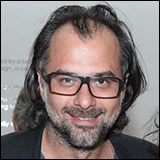Lecturers
(Visiting Faculty Spring 2012
 |
Makram el Kadi Born in beirut in 1974, Makram el Kadi received his bachelor of architecture degree from the American University of Beirut in 1997 and his masters of architecture from Parsons School of Design in 1999. After working at the offices of Fumihiko Maki in Japan, he joined Steven Holl Architects where for 5 years he was project architect on numerous international projects, among them the World Trade Center proposal with Richard Meier, Peter Eisenman and Charles Gwathmey, and the winning entry to the natural history museum of Los Angeles county competition. Mr. El Kadi taught architecture studio with Steven Holl at the Columbia University School of Architecture Planning and Preservation GSAPP in 2004 and 2005 and as part of L.E.FT at Cornell University in 2006, and currently teaches graduate studio at MIT where he serves at the Aga Khan visiting Lecturer. He also has a regular teaching position at Yale where was the Louis Kahn visiting assistant professor of architecture and has been part of the Yale faculty since 2009. |
 |
Ziad Jamaleddine Born in Beirut in 1971, Ziad Jamaleddine received his Bachelor’s degree in Architecture from the American University of Beirut in 1995, where he won the Areen Award for excellence in design. He received his Masters degree in architecture from the Graduate School of Design at Harvard University in 1999. Mr. Jamaleddine worked for Steven Holl Architects for 5 years where he was the assistant to project architect for Simmons Hall dormitory at M.I.T, (winner of the National AIA Design award in 2003 and the New York AIA award in 2002), and the project architect for the design and development of the Beirut Marina project in downtown Beirut. Mr. Jamaleddine co-taught Vertical studio and seminar at Cornell University, Third-Year Graduate Advanced Architectural Design Studio at PennDesign, and Vertical Studio at the American University of Beirut, Lebanon. |
Spring 2012 course
|
4.514 Architecture Design Option Studio – Affordable Housing in KSA
|